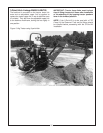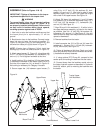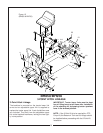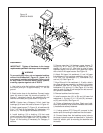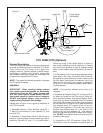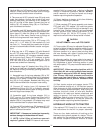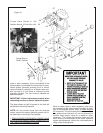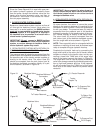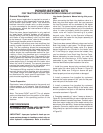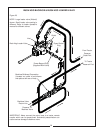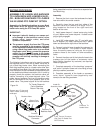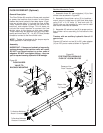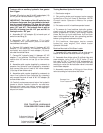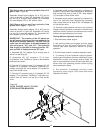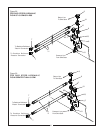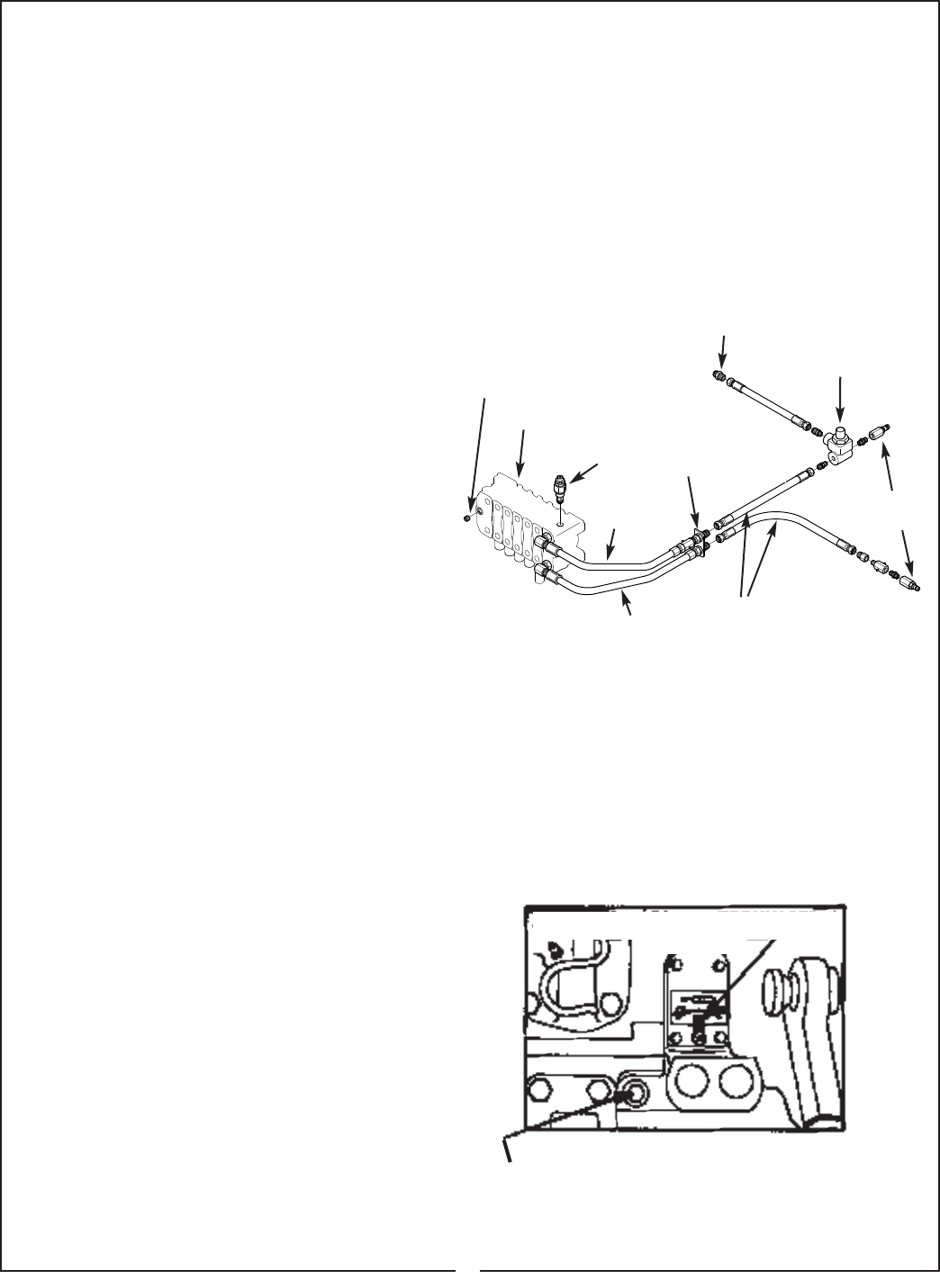
Hydraulic Hook-Up (BH750, BH850, BH950)
For Tractors With Closed-Center Hydraulic Systems
(Figure 21)
There are two basic types of hydraulic systems, open-
center and closed-center. The open-center system con-
stantly pumps oil through the hydraulic cylinder operat-
ing valves and returns the oil to the reservoir. The
closed-center system does not pump oil until there is a
demand for oil from one of the hydraulic cylinders.
In this case, CLOSED-CENTER means that when the
operating valves which control the hydraulic cylinders
are in the neutral position, there is no flow of oil through
the valves. As long as the engine and pump are run-
ning, a constant stand-by oil pressure of approximately
2000 PSI or more is maintained in the system. Pressure
oil is available instantaneously to go to work when any
one of the operating valves is opened.
Because there must be no flow through the backhoe
control valve when the levers are in neutral position, the
backhoe must be converted for closed-center operation.
Hook-Up Requirements
The hook-up of the BH750, BH850, & BH950 Backhoes
to the closed-center system requires more than con-
necting it to the remote couplers. The required devices
are:
1. A flow restrictor in the pressure line to keep the speed
of the backhoe operation within safe and acceptable limits.
2. A main relief valve in the backhoe control valve with a
pressure setting that is always higher than the tractor
system pressure.
3. A closed-center plug in the backhoe control valve to
make it a non-circulating or a demand type system.
4. A low pressure surge relief valve in the return line
to keep the tractor back pressure surges from dam-
aging the backhoe control valve seals or tractor sys-
tem. A surplus flow line from the relief valve carries only
the excess surge oil directly back to the tractor hydraulic
reservoir so that it bypasses all other tractor functions.
Backhoe Operation
For the most part, a backhoe will function about the
same whether it is powered by an open-center or
closed-center hydraulic system. However, there are
some differences which the operator should be aware of
when utilizing a closed-center hydraulic system.
As a backhoe function (lifting, actuating the bucket to fill
it, etc.) becomes increasingly difficult and the hydraulic
system pressure is rising closer to its maximum setting,
there will be a noticeable slow down before stoppage
occurs. As the system pressure is approaching maxi-
mum, the pump is also beginning to stroke back for less
and less fluid delivery. At maximum pressure, the pump
is completely destroked and there is no delivery.
Therefore, when working various backhoe functions at
or near maximum ability, a closed center system will
give the operator the impression that the backhoe is
sluggish and somewhat unresponsive. Learning to ease
up slightly at the first indication of slow down will permit
the backhoe to perform at continuing maximum speed
and efficiency.
Hook-Up Diagram
For John Deere Tractors use reservoir plug. Remove
plug, drill with 37/64 drill, and tap 3/8 NPT pipe. Screw
adapter into plug, locking with Locktite to assure
assembly will remain together during connecting
and disconnecting procedures. Obtain another plug
from your dealer to use when backhoe is removed.
For other tractor makes, use filler plug, drain plug,
or any other port that goes directly into the hydraulic
reservoir. Do not rely only on the remote coupler
return.
Typical plug for surplus relief flow line. Check care-
fully that it enters the reservoir before using. Note
that the location varies with different tractor makes
and models. A John Deere Tractor is shown.
JOHN DEERE - DIAL APPROXIMATELY
AS SHOWN
Figure 22
34
Figure 21
Remove port “C” plug and install
closed center plug inside port.
Re-install Port “C” plug
Backhoe Valve
Tank
Pressure
To Tractor
Reservoir
Backhoe Bulkhead
Connectors
Hoses Supplied
By Customer
Tractor
Coupler Tips
Surge Relief Valve
Main Relief
Valve



